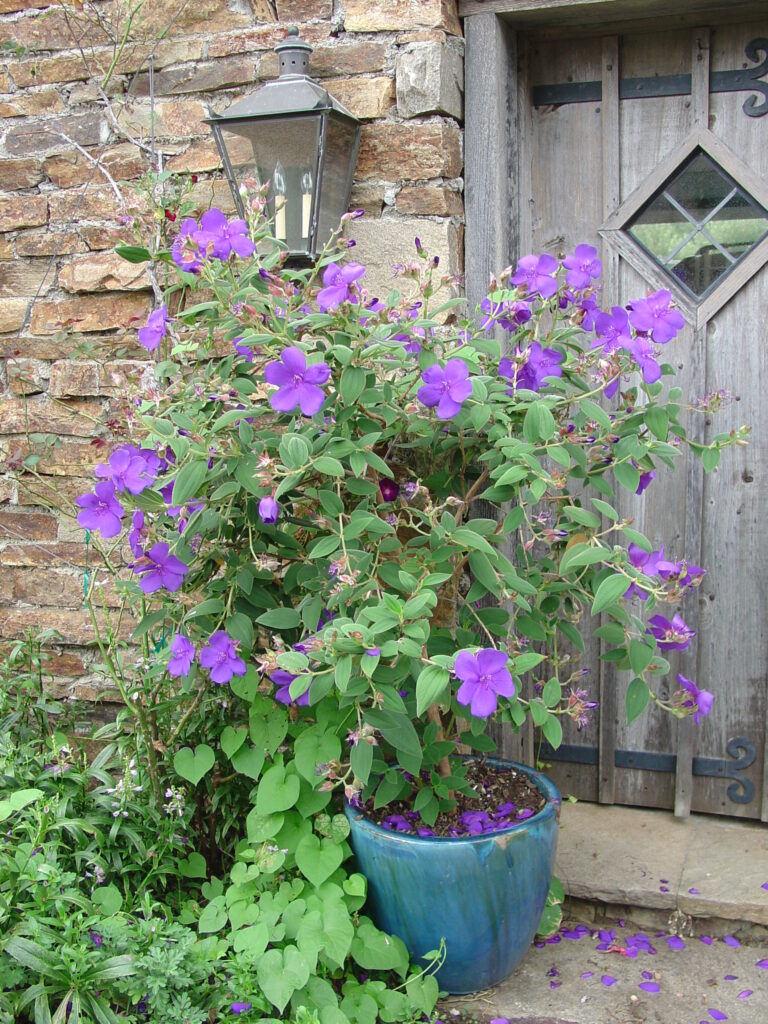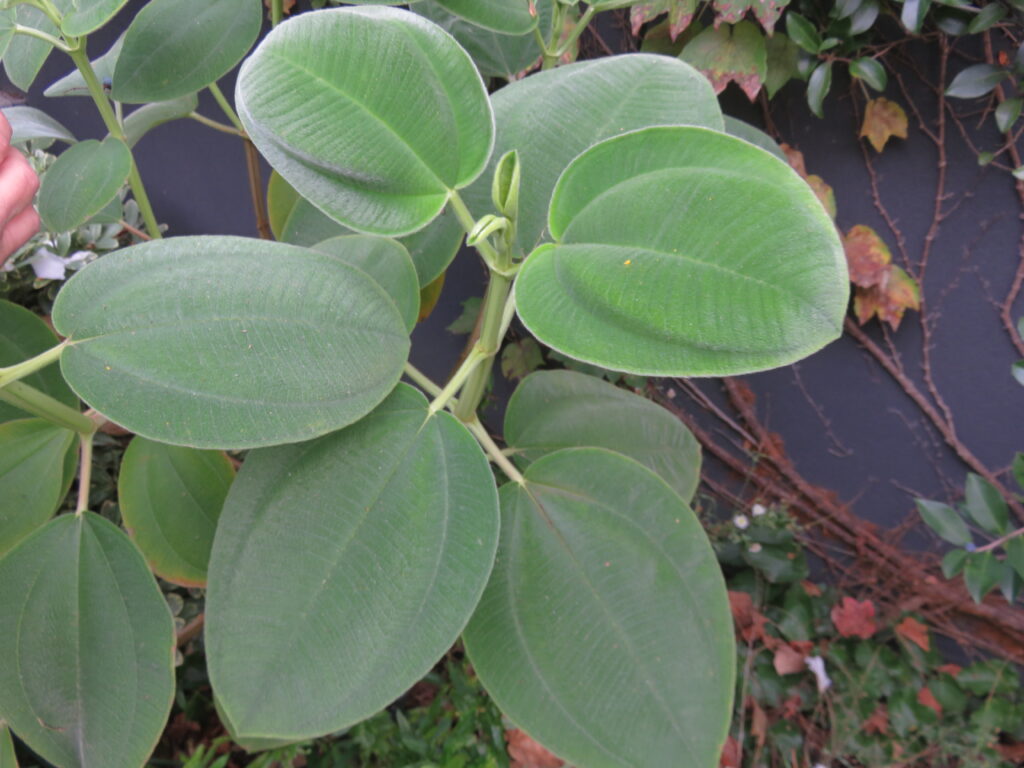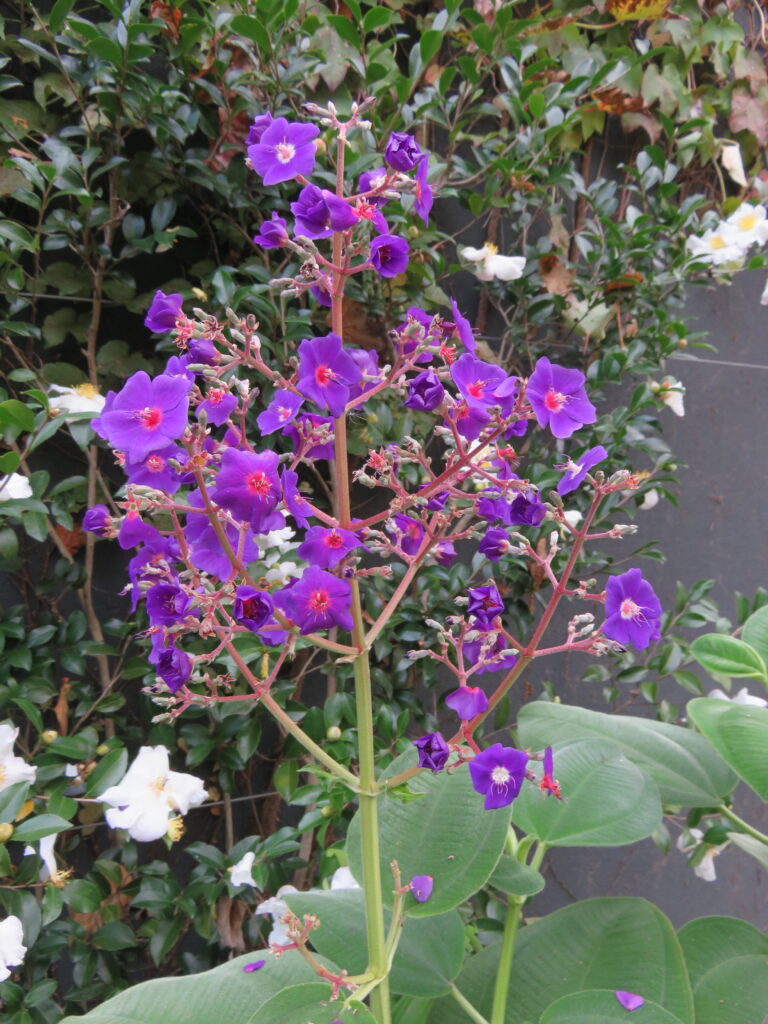
Princess Flower, aka glory bush (Tibouchina urvilleana) and the lesser-known T. grandifolia are evergreen tropical shrubs and small trees native to Brazil (zones 9-11). In zone 8 plants often dieback to the ground in winter and come back if winter temps remain above freezing. In the U.S. tibouchinas are primarily treated as garden annuals in zones 8 or lower. In tropical areas like Southern Florida, tibouchinas bloom on and off all year long.
T. urvilleana grows 15 feet high and bears large five petalled, purple to lavender colored blooms comprised of five wide open petals that are stunningly beautiful and bloom all summer long where temps are hot and humid on slightly downy, elliptical leaves. T. grandifolia grow only 6 feet tall with wider, round, soft velvety leaves. Flowers are 3- to 5-inches in diameter, and a vibrant deep-purple. Flowers are spiky upright clusters of small blossoms.
Tibouchinas grow best under direct morning sun or all-day dappled light and not in day-long blazing sun. Worldwide, other species are available. Container gardeners often prefer deadheading to encourage the formation of more flower buds and control plant size and form.

In temperate areas plant in spring after chance of frosts have ended. Set vegetative cuttings 3-4 feet apart in containers. Princess flower is often trained into tree form and typically reaches 6-8 feet but can grow to 10-20 feet in tropical areas. It can grow 6-8 feet tall outdoors (occasionally to 15 feet); 2-3 feet tall indoors. Princess flower prefers full morning sun and partial afternoon shade.
In areas with moderate mid-South winters (Zones 7 – 8), princess flower is utilized as a garden annual or in containers that can be over-wintered or a greenhouse. Use as a summer patio tree for accent and as a specimen. It’s difficult to overwinter in an unheated garage in borderline zone 8 without a good light and heat source. Showy purple flowers appear in terminal panicles and the tree has a long bloom season. The evergreen foliage is dark green with lighter undersides and are 4-6 inches long. Tip prune lateral branches to desired plant symmetry.
Protect plants from frost and strong winds. In zone 8 or lower, you can plant the princess flower in a container and bring it indoors each winter provided you are able to provide it with enough warmth and sunlight. It prefers moist acidic well-drained soil. In hot summertime areas, it likes some protection from the afternoon sun. It is tolerant of light drought conditions once established and exhibits moderate salt tolerance.
Water containers or garden areas on a regular schedule but don’t overdo it. Feed through the growing season with a slow-release granular fertilizer according to package directions. You might need to supplement feedings with liquid fertilizer and/or bonemeal to encourage more flowering. Troublesome pests include scales, mealybugs and nematodes.

Princess flower is a member of the botanical plant family: Melastomataceae and is a recipient of the Award of Garden Merit by the Royal Horticultural Society.

 Posted in
Posted in 
